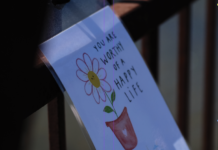Amidst a global pandemic, wide use of disposable gloves have caused shortages for frontline healthcare workers.
A study, led by Tizazu Mekonnen, UW Chemical Engineering professor, has found that alcohol, UV, and heat treatment are acceptable disinfection methods that allow gloves to be reused up to 20 times. The research team studied two types of gloves – gloves made from ‘nitrile’ or ‘latex.’ Both types were subjected to six disinfection treatments using UV radiation, dry heat, steam, alcohol, chlorine compounds, and quaternary ammonium compounds – commonly found in disinfectant wipes, sprays and other household cleaners designed to kill germs.
The study revealed that both types of gloves remained usable, even after using any of the disinfection treatments up to 10 times. However, only the alcohol, UV and dry-heat treatment did not affect the barrier properties when used up to 20 times. It was further discovered that barrier properties of gloves reduced slightly if steam, chlorine compounds, and quaternary ammonium compounds were used in the disinfection cycle.
Alcohol is considered to be the most efficient disinfection method, as it allows gloves to be disinfected while being worn and is also one of the most inexpensive techniques.
Researchers said more information regarding occupational health and safety is required before officially permitting the reuse of disposable gloves.
Reusing gloves decreases the number of gloves that end up in a landfill, thus offering a more sustainable way of handling the pandemic.
Health Canada has deemed disposable gloves essential during the pandemic. To manufacture disposable gloves, manufacturers require a medical license from Health Canada. Canada is also speeding up the importation and sale of medical devices used to diagnose, treat, mitigate or prevent COVID-19. Information on how to obtain a Class II medical device license for manufacturers of medical gloves can be found on Health Canada’s website.
The study, ‘Can Medical-Grade Gloves Provide Protection after Repeated Disinfection?’ was published in ACS Applied Polymer Materials. The authors include Mekonnen, Elnaz Esmizadeh, Boon Peng Chang, Dylan Jubinville, Ewomazino Ojogbo, Curtis Seto and Costas Tzoganakis – all from UW’s Chemical Engineering department.






























